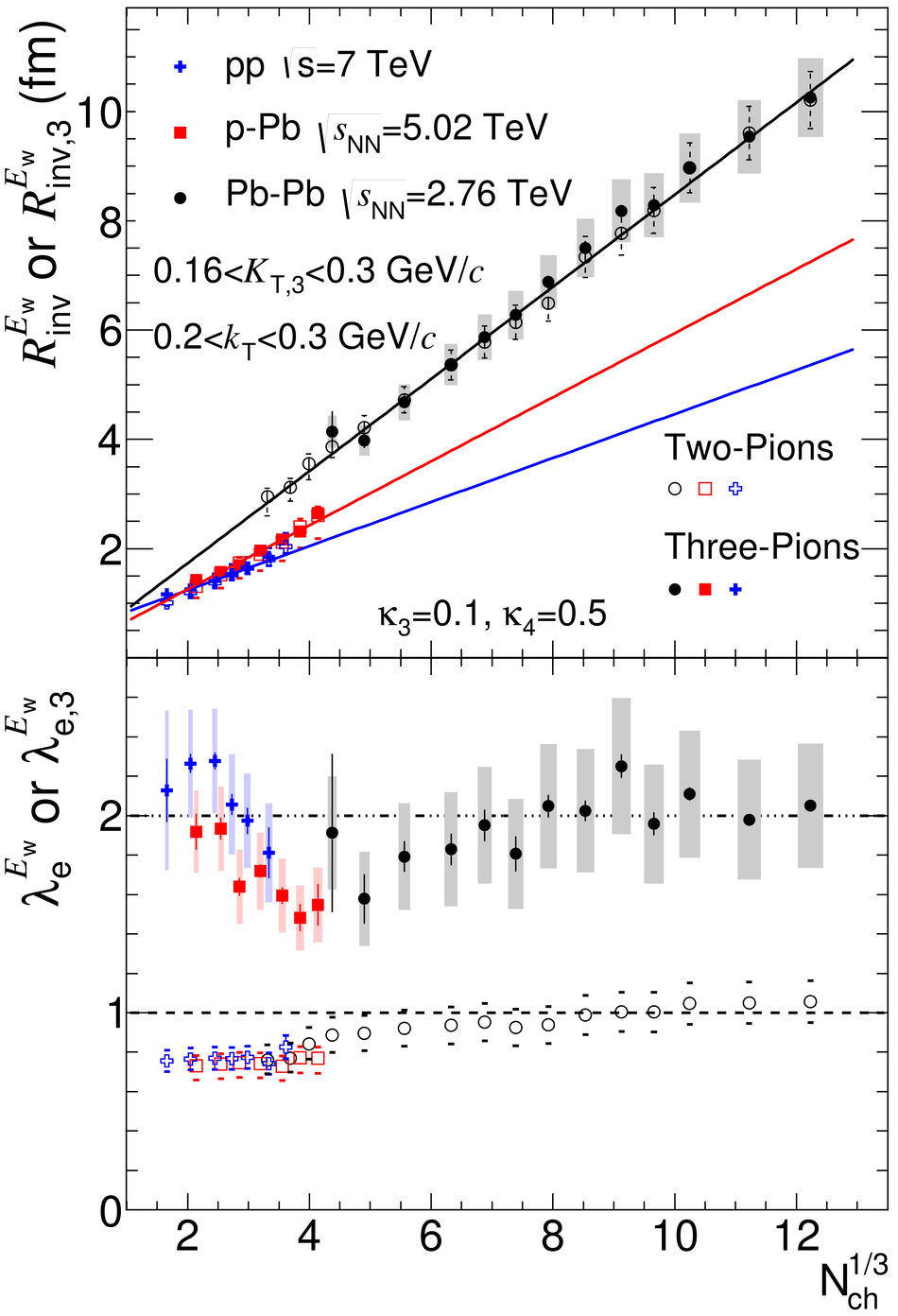Two- and three-pion Edgeworth fit parameters versus $\langle{N_{\rm ch}}\rangle^{1/3}$ in pp, p-Pb and Pb-Pb collision systems for low and high $\kT$ and $K_{\rm {T,3}}$ intervals. Top panels show the Edgeworth radii $R^{E_{\rm w}}_{\rm inv}$ and $R^{E_{\rm w}}_{\rm inv,3}$ and bottom panels show the effective intercept parameters $\lambda^{E_{\rm w}}_{\rm e}$ and $\lambda^{E_{\rm w}}_{\rm e,3}$. As described in the text, $\kappa_3$ and $\kappa_4$ are fixed to 0.1 and 0.5, respectively. The systematic uncertainties are dominated by fit-range variations and are shown by bounding lines and shaded boxes for two- and three-particle parameters, respectively. The dashed and dash-dotted lines represent the chaotic limits for $\lambda^{E_{\rm w}}_{\rm e}$ and $\lambda^{E_{\rm w}}_{\rm e,3}$, respectively. The low $\kT$ and $K_{\rm {T,3}}$ linear fit parameters for pp, p-Pb, and Pb-Pb are $0.436 + 0.403N_{\rm ch}^{1/3}$, $0.082 + 0.586N_{\rm ch}^{1/3}$, and $0.045 + 0.843N_{\rm ch}^{1/3}$, respectively, while for high $\kT$ and $K_{\rm {T,3}}$ they are $0.332 + 0.405N_{\rm ch}^{1/3}$, $-0.054 + 0.585N_{\rm ch}^{1/3}$, $0.049 + 0.772N_{\rm ch}^{1/3}$, respectively. For pp and p-Pb three-pion, while for Pb-Pb two-pion results are fit. |  |